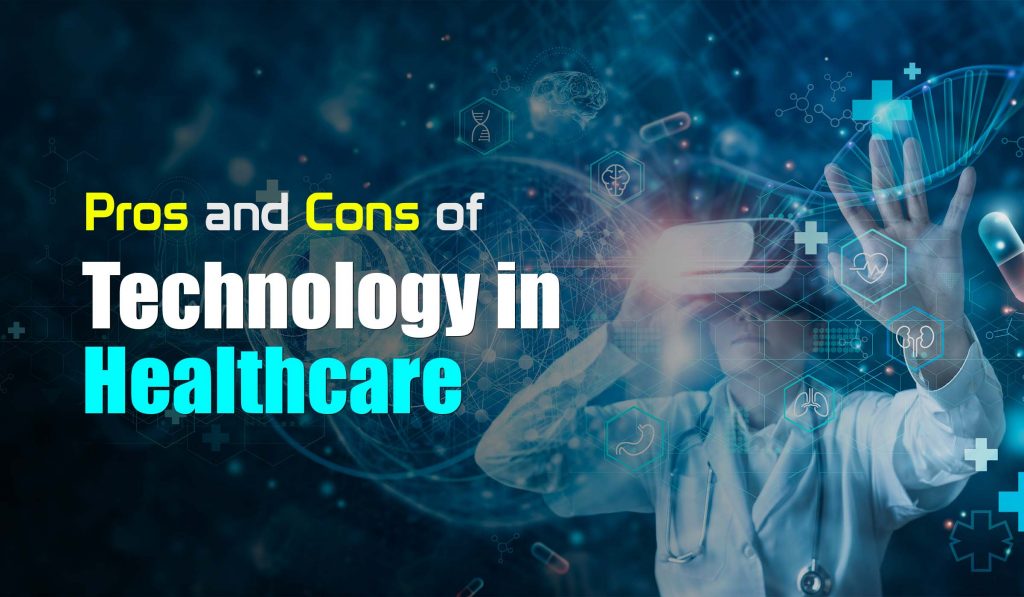Technology has revolutionized the healthcare industry, providing new tools and methods for diagnosing and treating patients. However, with any new technology there are always pros and cons to consider. In this article we will explore the use of technology in healthcare, its impact on the industry, and the benefits and drawbacks of its implementation.
The Use of Technology in Healthcare: Pros and Cons
The use of technology in healthcare has its pros and cons. On the one hand, technology can help improve the quality of care by providing better access to information and allow for more accurate diagnosis and treatment. On the other hand, technology can also lead to higher costs, errors, and privacy concerns.
Technology has helped improve the quality of care in many ways. For example, it has allowed for better access to information. With electronic health records, doctors can easily access a patient’s medical history and see what medications they are taking. This can help them make more informed decisions about diagnosis and treatment. Technology has also allowed for more accurate diagnosis and treatment. With advances in imaging, such as MRI and CT scans, doctors can get a better look at what is going on inside the body. This can lead to more accurate diagnosis and treatment.
However, technology can also lead to higher costs. The cost of new technology can be prohibitive for many healthcare organizations. Additionally, the implementation of new technology can be disruptive to workflow and lead to errors. Finally, there are privacy concerns associated with the use of technology in healthcare. Electronic health records contain sensitive information that could be accessed by unauthorized individuals.
The Impact of Technology on Healthcare
Technology has had a profound impact on healthcare. It has transformed the way we diagnose and treat patients, as well as how we communicate with one another. It has made medical care more effective and efficient, and has even saved lives.
However, technology also has its drawbacks. It can be expensive, and it can sometimes lead to over-diagnosis and unnecessary treatment. Additionally, it can create communication barriers between providers and patients.
Despite its challenges, technology has the potential to greatly improve healthcare. It can help us provide better care for our patients, and make our system more efficient and effective.
The Benefits of Technology in Healthcare
Technology has revolutionized the healthcare industry, providing new and innovative ways to diagnose and treat patients. One of the most significant benefits of technology in healthcare is the ability to provide better and more efficient care. With the use of technology, healthcare providers can now access patient medical records more easily, track important health data, and communicate with other providers more effectively.
Another benefit of technology in healthcare is that it has made care more personalized. With the use of electronic health records, providers can now tailor treatments to the specific needs of each patient. In addition, technology has also allowed for the development of new treatments and therapies that were not possible before.
Finally, technology has also made healthcare more affordable. With the use of telemedicine and other forms of remote care, patients can now receive care from anywhere in the world. This has led to a decrease in the cost of care, making it more accessible to everyone.
The Drawbacks of Technology in Healthcare
There are several potential drawbacks to the increased use of technology in healthcare. One is that it can lead to a more impersonal form of care. When patients are able to consult with their doctors via video chat or email, they may not feel as though they are receiving the same level of personal attention as they would if they were meeting in person. Additionally, technology can sometimes create communication barriers between patients and providers. For example, if a provider is using an electronic health record (EHR) system that the patient is not familiar with, the patient may have difficulty understanding what the provider is trying to communicate.
Another potential drawback of technology in healthcare is that it can be expensive to implement and maintain. For example, EHR systems can be costly to purchase and install, and they require ongoing training for providers and staff. Additionally, some forms of technology (such as diagnostic imaging equipment) can be very expensive to maintain and operate. Finally, there is always the potential for technical problems with any type of technology, which can disrupt care and cause frustration for both patients and providers.
The Future of Technology in Healthcare
The future of technology in healthcare is both immensely exciting and somewhat uncertain. On the one hand, there are a number of promising technological advancements that have the potential to transform healthcare for the better. For example, the use of artificial intelligence (AI) in diagnosis and treatment planning is already beginning to show great promise. In addition, new developments in gene editing and regenerative medicine hold tremendous potential for treating a wide range of diseases.
On the other hand, it is difficult to say exactly how these and other emerging technologies will ultimately be used in healthcare. There is a risk that some of these technologies could be misused or even abused, with potentially harmful consequences. As such, it is important to proceed with caution and ensure that any new technology is properly regulated.
Overall, the future of technology in healthcare looks very promising. With proper regulation, these new technologies have the potential to greatly improve the quality and accessibility of healthcare around the world.
Conclusion
The use of technology in healthcare has its pros and cons, but the benefits far outweigh the drawbacks. The future of healthcare looks very promising with the continued advancement of technology.

